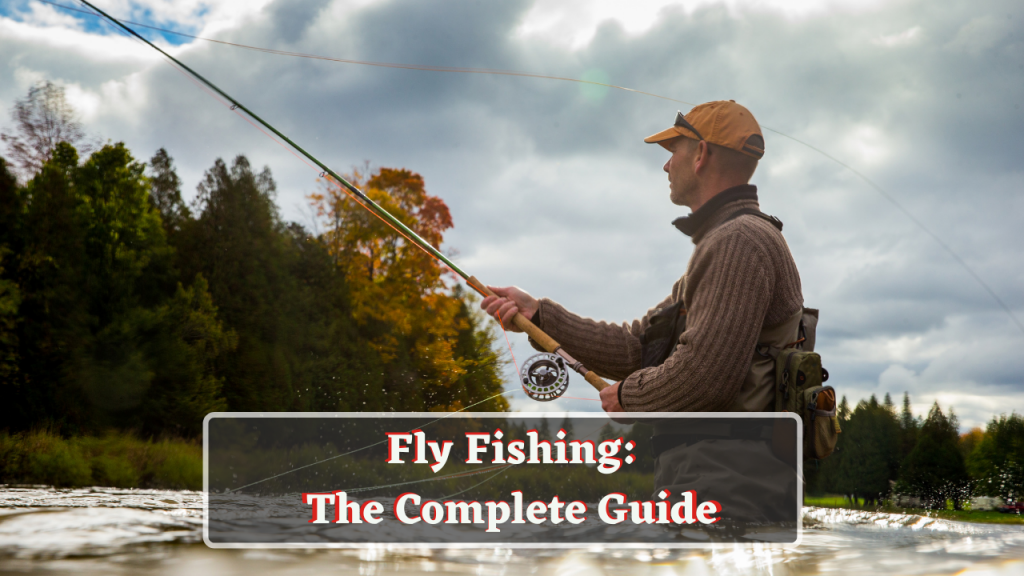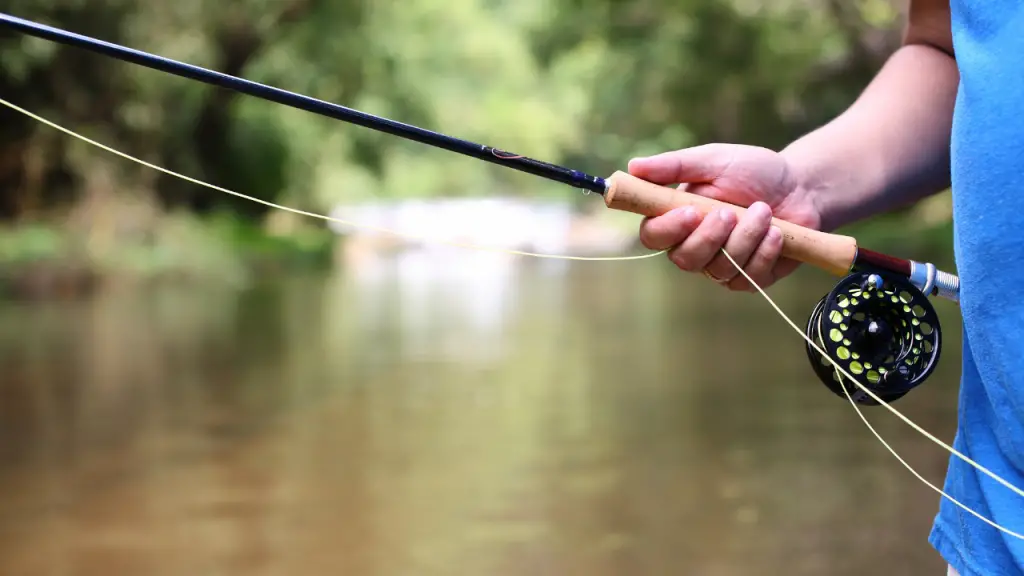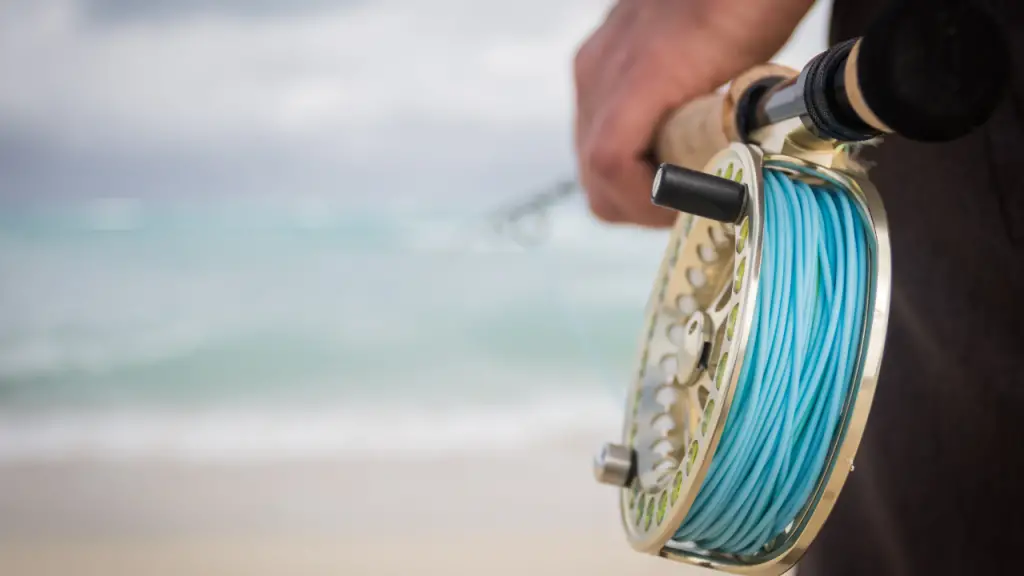Along your journey when fly fishing you are sure to find yourself in some of the most beautiful natural environments this world has to offer.
This guide will help understand the gear required to get started!

The Gear
Fly Rod
The majority of fly rods sold worldwide are 5-weights. This is a great generalist size for most freshwater applications, from tiny sunfish to larger trout and bass. It’s the first size most new anglers choose for starting their arsenal; it’s good for fishing all sorts of fish in fresh water lakes or rivers with little current. If you’re primarily going to be fishing in saltwater though, that 8-weight will make your life easier when targeting striped bass or redfish, salmon and steelhead alike – not only because these are usually bigger species than what can typically be found inland but also because they need more power behind them!
How to Choose?
When choosing a rod, it’s important to identify your primary target fish species in order to determine the strength and length of the rod you’ll need. The weight of fly line will depend on what type is being used as well as how heavy or light they are. I also recommend going from larger items (fly size) back down until finding out which reel works best for you.
It is always a good idea to stop in to your local fishing store to find out what is working for the locals. Use this map to find a store near you.
Weight
Start by deciding which weight of fly rod you need, based on your target species. If you’re after large trout or bass look at a 4-6lb line; for smaller fish like steelhead and salmon go with an 8-9 lb range. Length is also important: rods in the 6′ to 9′ range are most versatile but still easy enough to handle while fishing small streams.
The weight of a fly rod relates to the weight of the line that it is best suited for. Generally, you should be able to use 1 heavier or lighter than your current line with rods, but different weights will balance differently on them.
Length
The most popular lengths are between 66″ and 114″.
Short rods (66″) are more easily maneuvered in tight places like when wading upstream while longer rods (114″) can cast farther when standing on shore or an anchored boat. Look for long-reach fly rods that range up to 14′ when you are planning to reach difficult spots where casting is tough.
If you’re one who likes as much control over your line as possible then go with a shorter rod.
Action
The action of a fly fishing rod is determined by how stiff or flexible the rod is. Rods can be categorized in four different groups: fast-action, moderate-fast-action, moderate action and slow action rods. Fast actions have less flexibility than slower ones; meaning they are more powerful when casting because it takes little effort to bend them once you establish momentum during your cast.
Beginners should use a moderate action rod will allow for versatility as well as greater ease with which to learn how to cast properly since these types of rods give off much less resistance.
Types of Fly Fishing Rods

Fly rods are typically either a single-piece or two-piece.
A fly rod can be made of graphite, fiberglass, and even wood; different materials have their own advantages to the fisherman such as being lightweight which allows for greater mobility on stream banks when wading.
Most modern fly rods are crafted from composite resin in a process called lamination that combines layers of fiberglass cloth onto one another with internal aluminum tubes to form an impregnable shell that resists rotting.
The stiffness is relative to how much power you need: stiffer rods will cast farther and more accurately but require considerable arm strength while softer ones allow for easier handling at the expense of distance and accuracy.
Single Handed Rods
The single-handed rod is the most common type of fishing pole for anglers to cast with a single hand. These rods are available in all different weights and lengths, ranging from 6 feet to 10 feet long. They offer many benefits such as being lightweight which makes them easier for casting more accurately over longer distances than an average two handed rod would be able to do . For handling bigger fish or rivers where backcasting isn’t possible, spey and switch rods (below) may be preferable choices
Spey Rods
Spey rods are long, heavy-duty poles that allow the angler to cast a bigger fly and work over larger surface areas. These types of fishing rods have become increasingly popular for those who enjoy river or sea trout fishing because they can reach huge distances with ease! The downside is their slower action which makes them difficult to handle. They’re often recommended to experienced anglers only.
Switch Rods
For some anglers, switch rods have become the “go-to” rod in two-handed spey casting applications. Smaller and much lighter than traditional long spey rods, they can be toted through brush with ease, fished all day without fatigue or need less room compared to the traditional spey rod. Another appeal of these switch rods is that there are a wide range available line sizes from 3wt up to 11wt for those looking for more flexibility.
Watch the following video from Orvis to gain a greater understanding of how to set up a fly rod!
Prepare to be patient in this endeavor as fly fishing requires some understanding of it’s techniques before success will come easily.
Fly Reel

Reels are sized to correspond with rods and fly lines, and usually designed to match two consecutive rod weights, such as 3-4 or 5-6. They vary in physical weight and diameter—a trout reel for example being smaller than one made for tarpon.
Reel Weights
The reel weights represent the capacity of the fly line. Heavier fly lines can be casted further during high winds when casting heavier tackle is necessary , while lighter flies allow you greater mobility on small rivers where stealth may be more important than distance covered by your casts .
The Drag
The two types of drag systems in fly fishing reels are the disc and click-and-pawl
Disc systems offer the angler a more tactile feedback while fighting a fish and are generally preferred for this reason. With pawls, it’s difficult to feel how much pressure you’re applying so some fishers find them less desirable
A click and pawl drag system is a two-part system where the “clicker” is typically mounted on top of the spool and operates by being pressed down to create drag. The pawls are located below this, in contact with the fly line where they can be adjusted for more or less resistance.
Pawl systems have been around for some time but tend to be outdated when compared with newer designs like discs which offer finer adjustments
Fly Lines
With a fly fishing rig, the line itself provides the weight. The line is what gives the fly the ability to be delivered long distances.
Tapers
Weight Forward Fly Lines
This taper is the most common fly line used today and should be the recommend choice for beginners.
One of the advantages of using a weight-forward line is that you can achieve greater momentum hence making it easier to gain distance when casting
A downside with weight-forward lines is that it becomes more difficult to present the fly in a delicate manner
Double Taper
The double taper lines allows anglers to present the fly with more finesse compare to the weight forward line
This line distributes its’ weight from starting from the middle of the line and working it way out evenly in both directions
The double taper is a bit more challenging that the weight forward line but easier to cast than the level line
Level Line
The level line is uncommon yet the economical choice for anglers to use as they are less expensive than both the double taper and weight-forward options
Although the economical choice, they do not provide an advantage like the tapers mentioned above
Floating Vs. Sinking Lines
Most lines are considered either floating or sinking line. We recommend that beginners use floating
There’s no need to over explain this one. Floating lines FLOAT while sinking lines SINK
Sinking lines are used when targeting fish at a certain depth. Sink lines are categorized by their sinking rate expressed in inches per second(IPS). The deeper the feeding depth or your target species, the faster you will want your line to sink. Anglers typically use sinking line when fishing in deeper waters.
Leader and Tippet
The fly fishing leader and tippet are the components that provide the transition from the line to the fly.
Leaders are heavier compared to the tippet. They will typically taper down in weight moving from the fly line down to the taper.
The fly fishing tippet is the lighter component. Finding the balance of strength and lightness when choosing the tippet is important. The tippet plays an important role in the presentation of the fly to the fish.
Backing
Fly line backing is a line that extends the total length of line on your fly fishing reel and essentially providing an insurance policy for your line.
Backing should be attached directly to the arbor of the fly reel’s spool. Once the backing is securely attached and evenly wound on the spool, the back end of the fly line is attached to the end of the backing.
The most common connection between the fly line and backing is with a spliced, double-nail-knotted braided loop and Bimini twist.
Flies
Flies can be split into two different categories. You can certainly break them down into greater detail but for the sake of simplicity we will cover the two broad categories of wet and dry flies.
Dry Flies
Dry flies are used to imitate an insect that is floating near or above the surface of the water.
Dry flies are simple. You see the bugs, see the fish, cast to the fish, and watch the fish take the fly!
When the common folk picture fly fishing I imagine they envision the exact scenario I explained above.
Wet Flies
Wet flies are designed to sink into the water column while still mimicking insects
Most wet flies fall into one of four categories: fuzzy nymphs, wingless wets, winged wets, and soft hackles
Fly fishing with wet flies is a great choice for beginners because the cast does not need to be as precise compared to fishing with a dry fly. Also, the current does most of the work for you
Gear Checklist For Fly Fishing
- Rod
- Reel
- Line
- Backing
- Leader
- Tippet
- Fly
What to do next?
Hire a local guide to gain hands on experience. Or use this map to find a fishing spot near you. There is no substitute for practicing through action.










